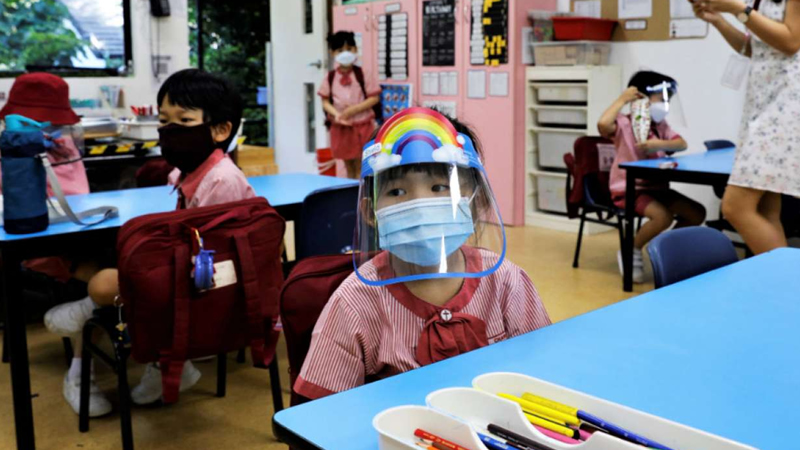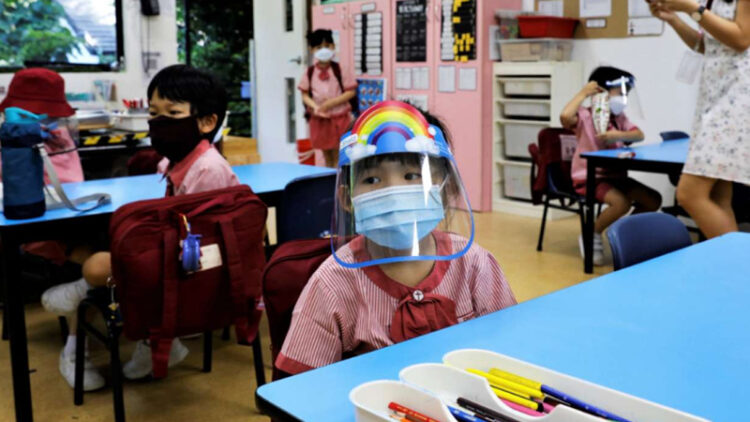Singapore has fared relatively well in containing COVID-19 infections. The country is deemed one of the best places to be as the world continues to struggle to overcome the pandemic. First, Singapore leads Asia in terms of inoculation efforts, having already issued more than 58 doses for every 100 citizens. Secondly, while the number of infected individuals changes from time to time, Singapore has consistently kept the number of new infections under control since the latter half of 2020.
Still, the country has not been spared from the effects of the ongoing pandemic. Establishments and organizations that cater to large groups of people—schools and childcare centers, in particular—have made significant adjustments to their day-to-day operations to ensure that they are able to adhere to the minimum safety guidelines set by the government.
 The act of balancing between providing students with environments that promote learning and ensuring that their risk of contracting disease is reduced is a delicate one. However, the government, educational institutions, and members of the general community are determined to minimize the impact of the COVID-19 pandemic on student life. Here are the steps that Singapore is taking to keep young students safe and healthy in the current milieu.
The act of balancing between providing students with environments that promote learning and ensuring that their risk of contracting disease is reduced is a delicate one. However, the government, educational institutions, and members of the general community are determined to minimize the impact of the COVID-19 pandemic on student life. Here are the steps that Singapore is taking to keep young students safe and healthy in the current milieu.
Promoting Home-based Learning
When the number of infection cases spiked in the country, the Singapore government implemented circuit breakers to curb the spread of the disease. During this time, residents, including students, were encouraged to stay at home as much as possible. No matter if it’s a local or an international elementary school in Singapore, educational institutions fully explored home-based learning (HBL) options and empowered their young students to continue learning outside of the regular classroom setting.
This gave educators the time they needed to develop HBL-appropriate educational materials and curricula. The experience also provided them with valuable insights on how to accommodate the students who may thrive on programs that combine HBL and in-classroom learning.
Despite this, many schools remain open and ready to accept students, especially those who do not have guardians to look after them during regular working hours.
Providing Financial Assistance to Students
Economically disadvantaged students and those with special needs may have a hard time adjusting to their changing schedules and the limited learning facilities that they have access to at home. These students can still benefit from the Ministry of Education’s Financial Assistance Scheme (MOE-FAS) despite their current learning arrangement. The program involves meal subsidies and monetary provisions to eligible students, and this support should take effect until the end of the full HBL enforcement in the city-state.
Suspending High-Risk Activities and Programs
Some activities, like cultural and musical lessons, are best taught in in-person classes. However, doing so at the moment would place young students at higher risk of contracting COVID-19. As such, it makes sense to suspend these high-risk activities when there’s an ongoing heightened alert status due to the pandemic. When it’s safer to do so, these classes can be conducted as long as the minimum safety guidelines are met by the class.
Supporting Infrastructure for Proper Contact Tracing
To simplify contact tracing efforts, residents have had to use apps and tokens whenever they check into a facility. These tokens are distributed in designated locations and can be requested and picked up by the student’s parents. If they lose their tokens, the students can still go to school provided that they are able to present their IDs. However, they will not be able to participate in events outside of their schools without the said tokens.
Expanding Surveillance and Testing Efforts
Residents who are unwell, especially those who have symptoms of a respiratory infection, are encouraged to see a medical professional who can recommend them to take a COVID-19 test. Immediate testing is an essential step in containing the disease and ensuring that it does not spread to other members of the community. Whether or not a person should undergo surveillance testing depends on a number of factors, such as their level of interaction with an infected person and how vulnerable they are to the disease.
Prioritizing Student Vaccination
Singapore has achieved a high level of success in containing the spread of COVID-19. At the same time, the country is going on an offensive against the disease by making every effort to promote vaccination programs that will help them eventually reach herd immunity. Currently, individuals aged 12 and above are encouraged to protect themselves and their community from the COVID-19 pandemic by getting vaccinated. To minimize disruptions in their studies, eligible students and their parents are urged to schedule their inoculation as soon as possible. Meanwhile, the government is actively looking for ways to solve vaccine supply constraints.
Many of the strategies that are used to protect young learners in Singapore came to be due to the pandemic, but some of them, like HBL, are here to stay—at least for the foreseeable future. In class, children are taught to incorporate safety and hygienic practices that are also deemed to become a part of everyday life. Hopefully, these current experiments and learning opportunities will help the country and the next generation improve their response to future health crises.



